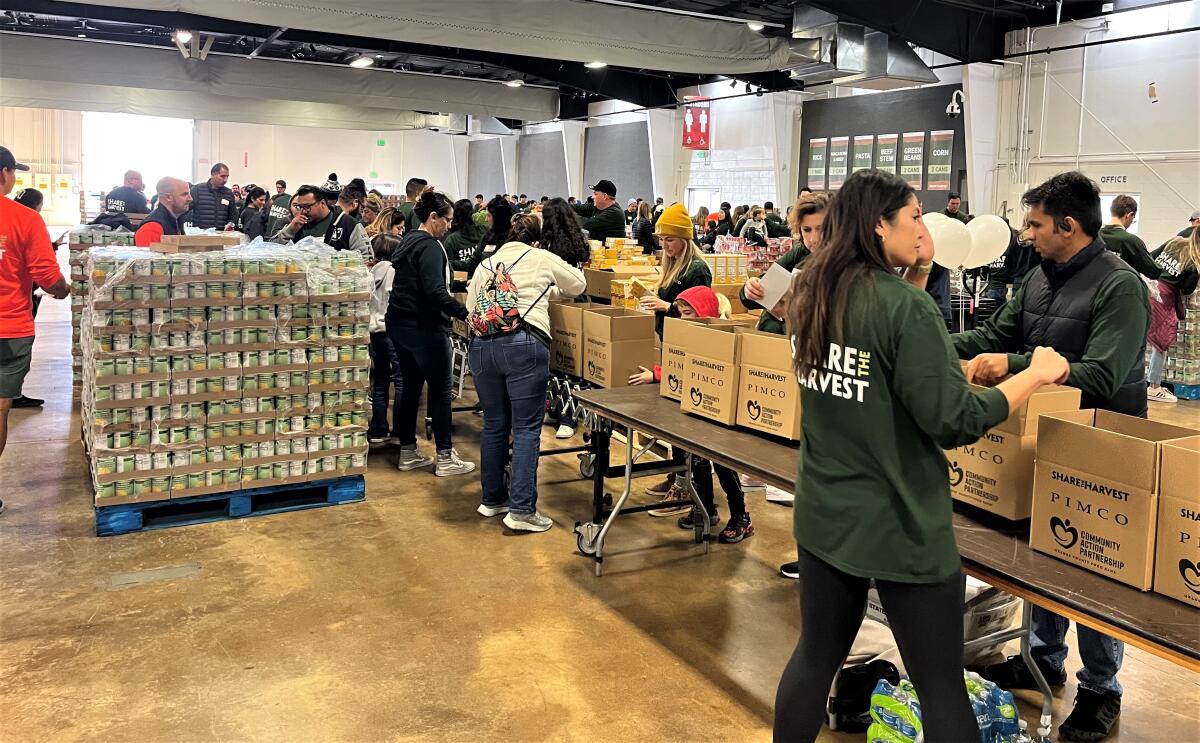Commentary: Continued investments, not benefit cuts, will solve child hunger and food insecurity

This federal government took a healthy step forward to quell food insecurity two years ago when they approved Emergency Allotments (EA) through the federal Supplemental Nutrition Assistance Program (SNAP, now known as CalFresh in California), which boosted access to fresh, nutritious food for struggling families. Today, we’re facing a step backward. And it’s one that could result in unparalleled levels of hunger and economic hardship for millions of Californians.
About that step forward: A strong, purposeful federal response to the COVID-19-caused economic crisis was instrumental in decreasing food insecurity. In 2021, child poverty dropped to 5.2% — a record low. That same year, food insecurity (the inability to afford food to sustain a healthy, active lifestyle) for families with children hit a two-decade low.
Now for that step backward: Emergency Allotments (EAs) are being cut, and millions of people will be impacted. On Dec. 29, 2022, President Biden signed the federal year-end Omnibus spending bill, a move that deeply affects Californians in need. In February, SNAP/CalFresh will no longer be tied to the federal Public Health Emergency, meaning that people all over California will receive their final, full EA this March. According to the Orange County Department of Social Services, this means $30 million less in benefits each month, and $360 million annually, to vulnerable Orange County families — families already grappling with skyrocketing housing and fuel costs, as well as food and consumer product inflation.
These EA cuts are meant to offset costs and make room for investments in wider programs designed to prevent hunger, such as a summer Electronic Benefit Transfer (EBT) program, which would provide a grocery card to public school students from low-income families during the hungriest months for school-age children. While implementing this essential program in past years has been effective, sacrificing EA benefits now to expand other programs is not a viable solution or a sound trade off.
Ending EA benefits in February will be nothing less than devastating for the five million Californians who rely on those extra dollars to purchase food for their children and families, as well as seniors on fixed incomes. The impact will be especially felt in households that could go from currently receiving $281 per month to a mere $23 per month. Additionally, California will lose $500M per month in food benefits that have served as a lifeline to low-income households around the state.
But it’s not just those in need who will feel the pain. The ripple effect is real.
Making drastic cuts to SNAP/CalFresh benefits now will harm California’s economy, which is already teetering on the brink of recession and facing a state budget deficit. Research shows that in a slowing economy, every SNAP dollar spent generates between $1.50 to $1.80 in economic activity. Sounds insignificant, doesn’t it? However, those dollars add up to a $1.54-billion contribution to our gross domestic product. Not to mention for that for every meal provided by our local food banks and pantries, SNAP/CalFresh provides nine. Without EA, spending in local food economies will significantly decline, which can trigger job loss and, even more critically, result in less food on the table for millions of families.
The upside: We can keep families — and our economy — intact.
At the state level, we’re taking a stand. The California Assn. of Food Banks has been a partner for many years with anti-hunger organizations from Washington, Idaho, Colorado, Oregon and Nevada, which form the Western Regional Anti-Hunger Consortium. The consortium recently issued a statement urging congressional leaders not to end EA too soon. Many East Coast organizations did the same through published statements.
In Orange County, we can be a voice for families in danger of losing the vital food assistance benefits that help them sustain themselves and their livelihoods. With less money to spend in grocery stores, more families will be looking to their local food bank or food pantry for assistance. We urge you to donate to Orange County’s food banks, which have been pressed into purchasing more and more food to distribute through their pantry systems. You can also contact the county Board of Supervisors or attend public hearings to encourage officials and entities to keep investing in food resources.
Finally, reach out to your congress members and urge them to push for an omnibus that includes comprehensive child nutrition reauthorization. This includes long overdue improvements to the Community Eligibility Provision, which provides School Nutrition Program sponsors assistance for meal service options at school and school districts in low-income areas. Ask too that they push to establish permanent nationwide summer EBT before the end of the 118th Congress — all without cuts to SNAP/CalFresh or any other anti-poverty programs as an offset.
Powerful change only comes to life when we work together in our neighborhoods, our communities and in government. We can act in the name of humanity to impact a larger vision of well-being on multiple levels. We’re at our best working together and with our government, collaborating for our collective well-being.
The O.C. Hunger Alliance is an anti-hunger organization formed by Community Action Partnership of Orange County (Gregory C. Scott, president and CEO), Second Harvest Food Bank of Orange County (Claudia Keller, CEO) and Abound Food Care (Mike Learakos, CEO).
All the latest on Orange County from Orange County.
Get our free TimesOC newsletter.
You may occasionally receive promotional content from the Daily Pilot.



